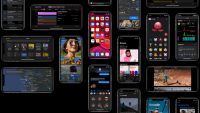Apple’s iOS 13 Reveals Path Forward for Augmented Reality
September 16, 2019
Apple signaled its steps toward augmented reality with a feature found in both iOS 13 and Xcode 11. Developers Steve Troughton-Smith and Guilherme Rambo discovered StarBoard, a stereo AR feature that appears to be similar to iOS’s CarPlay feature, which relies on an iPhone to generate graphics for a vehicle’s external touchscreen. But whereas CarPlay outputs a single image for a 2D display, StarBoard can apparently output two images for a 3D stereo headset, paired with a touch-based AR navigation controller.
VentureBeat reports the “code suggests that your hand will grasp something akin to a Siri Remote or Oculus Go controller, combining a touch surface and motion controls with a trigger and a Home button.” Apple already offers developers its ARKit software, but the code also refers to new AR software and hardware, dubbed Holokit, Garta, Franc and Luck.

According to Troughton-Smith, “Apple might be priming a third-party accessory program to bring compatible glasses into the marketplace with its own offering as a ‘halo’ product.”
The approach seems somewhat similar to Qualcomm’s XR Smart Viewer, announced in February, which uses Snapdragon 855-powered smartphones “to process data and visuals for lightweight, screen-laden glasses.”
Around the same time, Nreal showed off Light, a $500 pair of glasses that weigh three ounces and use a Snapdragon 845 process. Nreal, which “occupies a 52-degree field of view with a bright, colorful 1080p resolution display that appears to make digital objects float plausibly in your field of view,” also features twin cameras and an inside-out tracking system.
Apple faces two big challenges: “offering the accessory with both a form factor and a price that will resonate with consumers, rather than just enterprise users.” The high-priced headsets released by Microsoft and Magic Leap, both of which need a lot of computing power, haven’t taken off with mainstream consumers.
VB notes, “it remains to be seen whether Apple will be able to stream data wirelessly to the headset while offering enough battery power to make it usable for hours at a time.” Wi-Fi 6 and an ultra-wideband wireless chip dubbed U1 — both found in iPhone 11 and iPhone 11 Pro — “could enable the company to steer fairly high-bandwidth wireless transmissions from iPhone to headset rather than relying on a cable.”
With regard to software, “Apple could rely on developers to code iOS apps that will initially depend on iPhones, then spin off into apps that run directly on a more powerful future headset or over 5G from cloud servers.” Apple hasn’t yet revealed when it will debut the AR headset.

No Comments Yet
You can be the first to comment!
Sorry, comments for this entry are closed at this time.